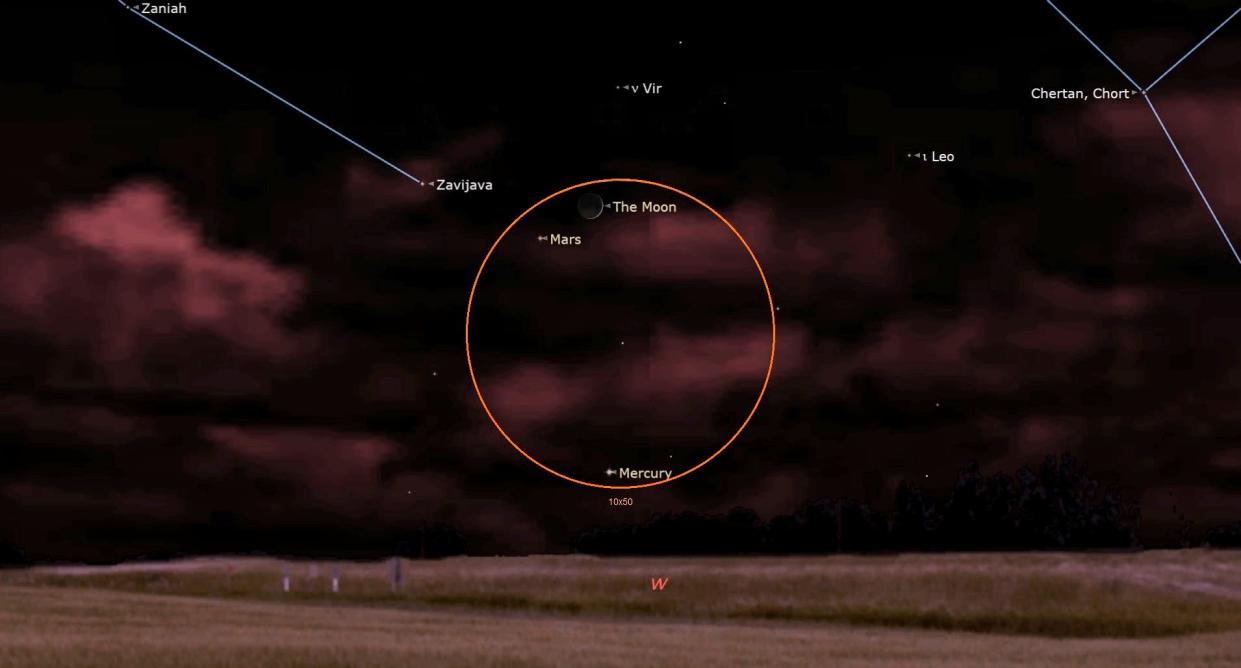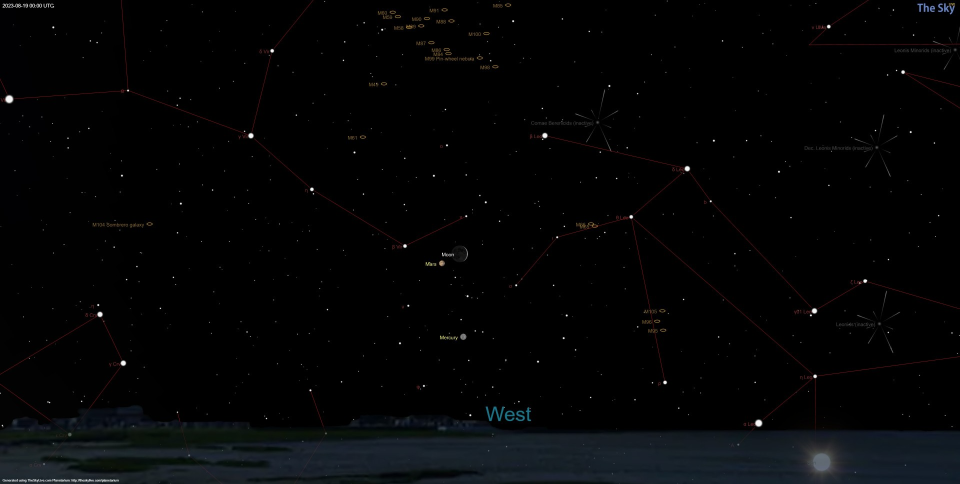See the moon and Mars enjoy the sunset together tonight

The moon will make a close approach to Mars on Friday, Aug. 18, remaining together throughout the day and after sunset. The two celestial bodies will bask in the light from the setting sun as they also dip below the horizon together.
From New York City, the pairing will be visible shortly after it rises over the horizon at around 8:35 a.m. EDT (1235 GMT) on Friday morning, according to In the Sky. The close approach of the moon and Mars will remain visible until shortly before the pair sinks below the horizon around 9:01 p.m. EDT (0101 GMT).
If you want to catch a glimpse of the arrangement, look to the west as the sun sets and find the moon. You will need an unobstructed view of the horizon, as the two will be somewhat low by sunset. Mars will be just below and to the left of the moon. As an added challenge, see if you can spot distant Mercury which will be much fainter and smaller than Mars. The solar system's innermost planet will be roughly 6 degrees below the moon (about half the width of your palm at arm's length).
Related: Night sky, August 2023: What you can see tonight [maps]
TOP TELESCOPE PICK:

Want to see Mars and Mercury in the night sky? We recommend the Celestron Astro Fi 102 as the top pick in our best beginner's telescope guide.
The three-day-old moon, which will be in its waxing crescent phase, the stage in the lunar cycle at which time light gradually creeps back across the lunar face, will only be around 1 degree from Mars (less than the width of a finger at arm's length).
During the close approach and the conjunction, both the moon and Mars will be in the constellation of Pisces. The moon will have a magnitude of -9.5, (the minus sign indicates a bright object over Earth), while the Red Planet will be much fainter with a magnitude of 1.8. Mercury, if you can spot it, will be slightly brighter than Mars at a magnitude of 0.6.
The pairing will be separated from the setting sun, which is in the constellation of Leo, by 29 degrees.

Despite this being a close approach between the two solar system objects, the moon and Mars will still be too widely separated in the sky to be spotted together in the field of view of a telescope. They should be visible together in the wider field of view of binoculars, however.
At around the same time as the close approach, the two solar system bodies will be in an arrangement astronomers call a conjunction. This means they will share the same right ascension in the sky, the celestial equivalent of longitude.
The closeness of Mars and the moon on Friday is an artifact of our view of the solar system from Earth. While the average distance between our planet and the moon is 238,855 miles (384,400 kilometers), the distance between the Earth-moon system and the Red Planet, which is the fourth planet from the sun, is around 140 million miles (225 million kilometers) on average. Currently, Mars is around 226 million miles (365 million kilometers) away, according to The Sky Live.
Mars will reach its most distant point from our planet in mid-Oct. 2023 when it will be around 240 million miles (381 million kilometers) away. Following this, the Red Planet will make a real close approach to Earth and the moon in mid-January 2025, when the third and fourth planets from the sun will be separated by about 60 million miles (96 million kilometers).
If you are hoping to catch a look at the moon and Mars together, our guide to the best binoculars are a great place to start. Or, if you want to take a closer look at either one, our guide to the best telescopes can help you find the optical gear you need.
If you're looking to snap photos of these celestial objects or the night sky in general, check out our guide on how to photograph the moon, as well as our best cameras for astrophotography and best lenses for astrophotography.
Editor's Note: If you snap an image of the close encounter between the moon and Mars and would like to share it with Space.com's readers, send your photo(s), comments, and your name and location to spacephotos@space.com.

